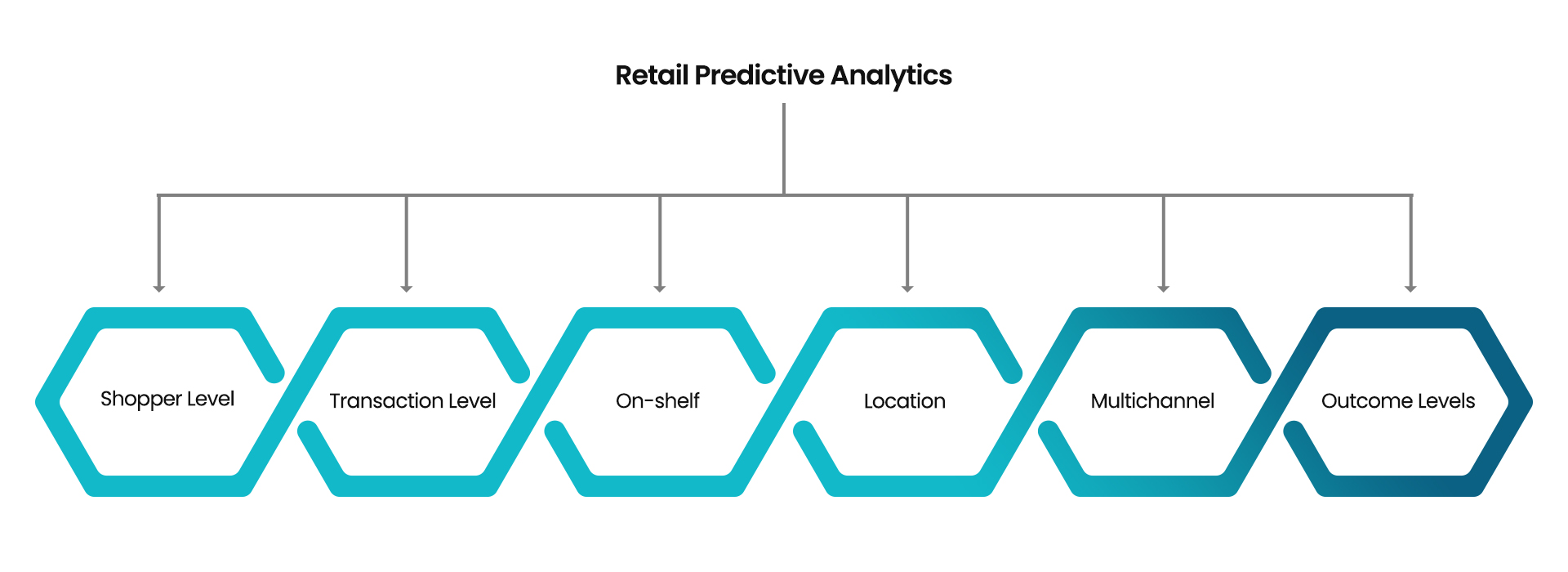10 ways predictive analytics shapes decision making
October 30, 2023
In the ever-changing world of retail, businesses face immense challenges in understanding and responding to dynamic consumer behaviours, market trends, and supply chain complexities. However, with the rise of data-driven technologies, a new ally has emerged to help retailers thrive in this competitive landscape: predictive analytics. This revolutionary approach to data analysis has the potential to transform the way retailers operate, optimise their processes, and create unparalleled customer experiences.
Retail predictive analytics explained
Retail predictive analytics is the application of advanced analytics techniques and algorithms to analyse historical and real-time data in the retail industry. It involves extracting valuable insights, identifying patterns, and making predictions about future outcomes and trends. By leveraging data from various sources, such as sales records, customer interactions, inventory data, and external factors, predictive analytics helps retailers make data-driven decisions to optimise their operations and enhance business performance.
How predictive analytics work
Once the data is in hand, there are three types of predictive analytical tasks to be performed on the available data. Descriptions, Extrapolations, and Inference.

Types of retail analytics
There are diverse ways to break down retail analytics into different categories. Depending on the organization's needs, Retail analytics encompasses a wide range of analytical techniques used to derive insights.
Specifically for retail, organisations have to make sure that they are fundamentally asking questions about the relevant business operations, store operations, the entire organisation, or a specific business unit. Answering these questions leads to useful levels.

10 ways predictive analytics shapes decision making
Retail predictive analytics offers a wide range of benefits that can significantly enhance retail operations, improve customer experiences, and drive business growth. Here are some key benefits of using predictive analytics in the retail industry:
- Predictive Revenue: Revenue projection is one of the most demanding applications of retail predictive analytics. The information is used for futuristic planning and provides granular details when the data is broken down into product types, individual SKUs, stores, inventory levels, and more.
- Product Demand Forecasting: Predictive analytics can accurately forecast future demand for products based on historical sales data, seasonal patterns, and market trends. This helps retailers optimise inventory levels, reduce stockouts, and minimise excess inventory costs.
- Predict Changes: A lot of predictive analytics tools provide spotting trends and extrapolating from them based on the consumption and assumptions made for this. So, based on tastes, technology, customers, fashion, raw materials, colours, and many more
- Personalised shopper recommendations: When enough data on customer choices is available, state-of-the-art predictive analytics technology can be a top choice. By analysing customer data and behaviour, retailers can deliver relevant offers and recommendations to individual customers, increasing engagement and conversion rates.
- Market Basket Analysis: Some products just "go together". Market basket analysis is a technique that predicts what customers are going to buy together. Market basket analysis generates personalised recommendations, new promotions, future strategies, and more.
- Customer Segmentation: With predictive analytics, retailers can segment their customer base into distinct groups based on their preferences, purchase behaviour, and demographics. This allows retailers to tailor marketing strategies and offers to specific customer segments, improving customer retention and loyalty.
- Churn Prediction: Predictive analytics for retailers can identify customers who are at risk of churning based on their behaviour and interaction history. Retailers can then implement proactive retention strategies to reduce churn and increase customer lifetime value.
- Improved Inventory Management: By accurately predicting demand and consumer trends, retailers can optimise their inventory management processes. This ensures that the right products are available at the right time, minimising carrying costs and avoiding stockouts.
- Fraud Detection: Predictive analytics can help retailers identify potentially fraudulent transactions in real time. By analysing transaction data and customer behaviour, retailers can detect and prevent fraudulent activities, reducing financial losses.
- Optimised Store Operations: Predictive analytics can help retailers optimise various aspects of store operations, such as staff scheduling, store layouts, and product placements. This results in improved store efficiency and a more pleasant shopping environment for customers.
Predictive analytics is a necessity, not a choice
The goal of retail predictive analytics is to provide retailers with actionable insights to improve operational efficiency, enhance customer experiences, increase sales, and drive business growth. By understanding and predicting customer behaviour, market trends, and operational factors, retailers can make proactive decisions, optimize resources, mitigate risks, and capitalize on opportunities.
Overall, retail predictive analytics enables retailers to make informed and strategic decisions by leveraging the power of data and advanced analytics techniques to gain a competitive edge in the dynamic and rapidly evolving retail landscape.
Systems Limited allows retailers and manufacturers to access and share data seamlessly. With modern industry-driven analytics solutions, retailers can deliver a more personalised shopping experience, resilient supply chains, and data-driven business decisions. Visit our data and AI page for more information on our wide array of services and offerings.
Quick Link
You may like

From data to decisions: Exploring data analytics in banking
Learn more about how digital currency is the new talk of the digital age, revolutionizing the way
READ MOREHow can we help you?
Are you ready to push boundaries and explore new frontiers of innovation?


